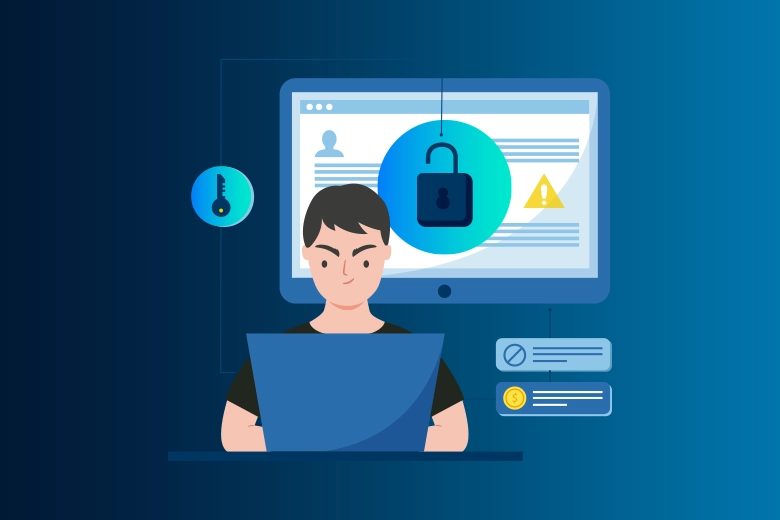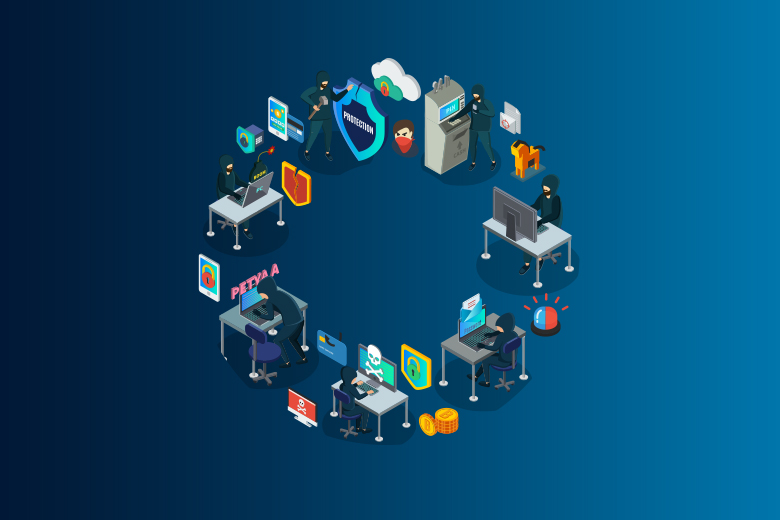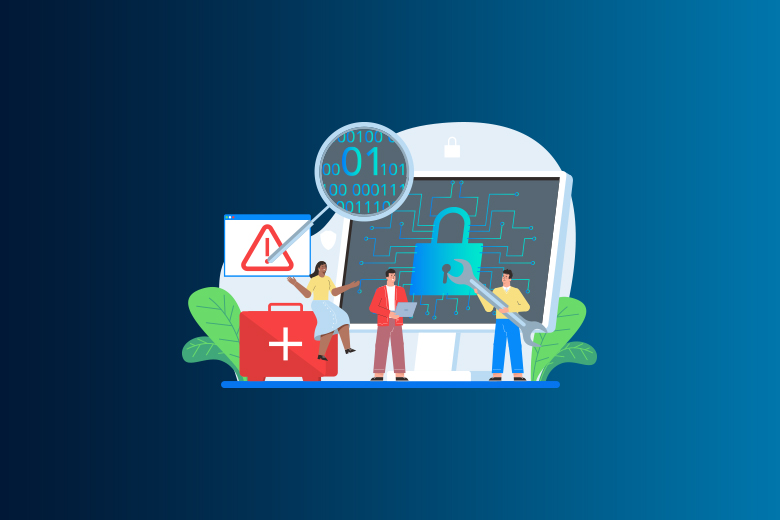17 January 2024
SafeAeon Inc.A single data breach has cost a business more than $4 million in the digital world. A fact like these makes it even more important to have strong cybersecurity steps. Over 400,000 new pieces of malware are found every day. The threat landscape is changing so quickly that IT workers are facing more and more problems. As a company grows, the safety risks it faces rise. Cybercriminals are always coming up with new ways to get into records and networks. If you don't keep an eye on things all the time, even a system that is safe today could become weak tomorrow.
Cyber dangers are now being actively fought by organizations. They are using fake cyberattacks more and more as a key part of their security plan. These simulations are full tests of how ready a company is. They show where security measures are weak and give us information about how well they work. This is done with platforms such as Gartner's Breach and Attack Simulation (BAS). They help businesses to practice complex, real-life attack scenarios. This helps them carefully look at their defenses and make them better. Businesses can make their security better by simulating cyberattacks. Being prepared like this helps them stay ahead of possible breaches. It also lowers the chance of having expensive security simulated cyber-attack problems.
Purpose of a simulated cyber attack
The main goal of a cyber attack simulation is to find and fix security holes in an organization's cyber systems before they happen. It takes a realistic look at how well a company can handle different cyber threats. This simulation tests how well the current security measures and incident reaction plans work by simulating real-life attack tactics, techniques, and procedures (TTPs). It points out both technical and operational flaws that attackers could use against you. These kinds of proactive reviews are very important for improving an organization's cybersecurity, which makes it less likely that real-world cyberattacks will be successful.
Different kinds of cyberattacks to practice
Many different kinds of cyberattacks can be simulated to learn about and improve an organization's cyber defenses. Here are some types of keys:
- Network Infiltration Attacks: These simulations act out efforts to get into a company's network without permission to use its resources.
- Endpoint Attacks: Endpoint attacks are aimed at finding weak spots in laptops, desktops, cell phones, and servers that are linked to the network.
- Web Application Attacks: Web Application Attacks are attacks on web-based apps that take advantage of any flaws in their software, design, or setup.
- Email Infiltration Attacks: These models try to trick users into giving out private information or installing malware by accident by using phishing or other email-based tricks to find weaknesses.
- Data Exfiltration Attacks: These attacks look at how attackers could take data out of an organization's network without permission.
- Lateral Movement Attacks: Lateral Movement Attacks are testing methods attackers use to move around in a network after they've gotten in. They usually involve increasing their privileges and switching systems to get to private data or assets.
- Cloud Attacks: Cloud attacks are mostly focused on weak spots in the infrastructure of the cloud, such as apps, data storage, and computing resources. Misconfigurations, weak access controls, or unprotected APIs that could allow hackers to get into your account or compromise your cloud services may be the focus of these scenarios.
It is important to be aware that the range of possible cyber dangers is very large and is always changing. It's hard to simulate every possible danger because new techniques, weaknesses, and attack vectors are always being found. To keep your safety strong, you need to keep up with this constantly changing world.
How Does a Simulated Cyber Attack Work?
An attack exercise is a structured process that needs to be carefully planned and carried out. Here's more information about each step of the process:
Threat Profiling with Cyber Threat Intelligence (CTI):
Understanding the Adversary: First, look for people who might be a threat. For example, in the banking industry, you should look into cyber threat intelligence (CTI) that is useful for banks. This means looking at past events, figuring out the tricks, techniques, and procedures (TTPs) that cybercriminals use, and guessing what threats might happen in the future.
Setting the limits of the attack simulation:
Establishing Boundaries: Make it clear which parts of your system and network are being simulated. Find out which tools can be tested safely without stopping the business. Set rules for the exercise, such as which systems can't be accessed and which IP addresses can be used for reconnaissance. This will help avoid any unintended outcomes.
Setting the Goals for the Cyber Attack Simulation:
Making Goals Clear: Figure out what you want the program to help you do. It could be anything from trying certain defenses to seeing how your team handles a certain kind of attack. The goals you set should be in line with the biggest risks and weaknesses your company faces.
Planning the Attack:
Strategizing the Simulation: Make a specific plan for how you will carry out the attack. This includes picking the kinds of attacks to mimic, the tools and methods to use, and the order in which things should happen. To give useful information, the plan should be as close as possible to real-life attack situations.
Executing the Cyber Attack Simulation:
Putting the plan into action: Running the cyberattack simulation. Follow the plan for running the exercise. Be ready to change with the times because the network world is always changing. While putting the plan into action, the team may find new weaknesses or ways that weren't clear during the planning stage. Being flexible is important to find as many weaknesses as possible.
Results and Reporting:
Analyzing and Documenting Findings: Once the exercise is over, write a detailed report about what was learned. This should include the weaknesses that were used, the methods that were employed, and how well the company's protections worked. The study should include suggestions for how to make security better that can be put into action.
Each of these steps is very important for a good attack simulation. They make sure the simulation works well and is as realistic as it can be, which gives useful information about how secure a business is. By carefully planning and carrying out these scenarios, businesses can make themselves much more ready for cyber threats in the real world.
Benefits of Simulating Cyber Attacks
These simulations are very helpful for keeping a strong and proactive cybersecurity stance.
- Addressing Skills Gap: improves your current abilities and gets rid of the need to train employees in-house in specific security skills.
- Benchmarking Your Security: You can find out how strong your security is against online threats by benchmarking your security. It also lets you compare your defenses to benchmarks in your business.
- Customized Attack Simulations: These test your security against certain threats or parts of threats. Through efficient assessments, this method can cut the time needed for remediation by a large amount.
- Meeting Compliance Requirements: Helps the business meet its security standards, which is one of its compliance requirements. It also shows that security methods are always getting better.
- Showing Security ROI: This helps you figure out what parts of security need to be improved. It also confirms that the security settings you already have are working.
- Comprehensive Reporting: Gives reports to executives that help them evaluate and talk about the amounts of business and technology risk.
Conclusion
The digital world is always changing, and many threats are hard to see. Like firefighters working with controlled burns, simulated attacks are an important way to learn. For building cyber resilience, these activities are a must. These aren't just made-up problems; they're chances to find gaps. They help you improve your reaction plans and make your organization stronger. Every fake breach is like a shot that gets your systems ready for real threats. The things you learn are very important. They show you where your defenses are weak and where your reaction plans are missing. If you don't find these problems, they could grow into big weaknesses. Cybercriminals often take advantage of these kinds of flaws.
Simulated attacks create controlled chaos, which is important for the growth of a company. They're not just practice exercises; they're also changes in the way people think and act. They promote working together, being aware of cyber dangers, and taking action before they happen. Don't wait until there is a real attack to understand how important these drills are. Spend money on them to get ready for battle. This plan will help you protect yourself from online threats. Remember that the best way to protect yourself from online threats is to be ready. In the online battleground, your strengths should be being ready, knowing a lot, and being tough by getting in touch with SafeAeon.














